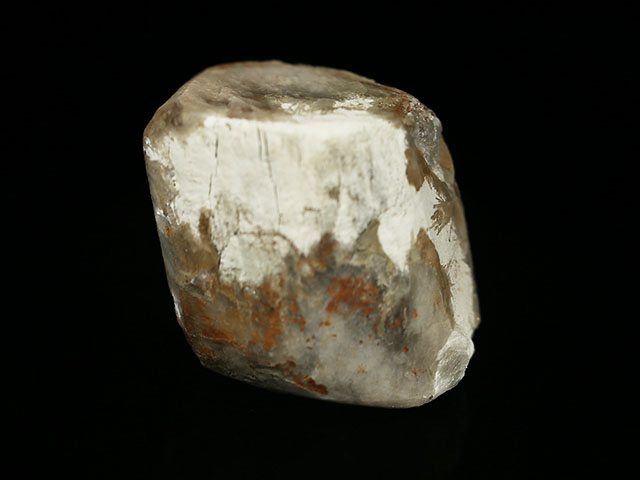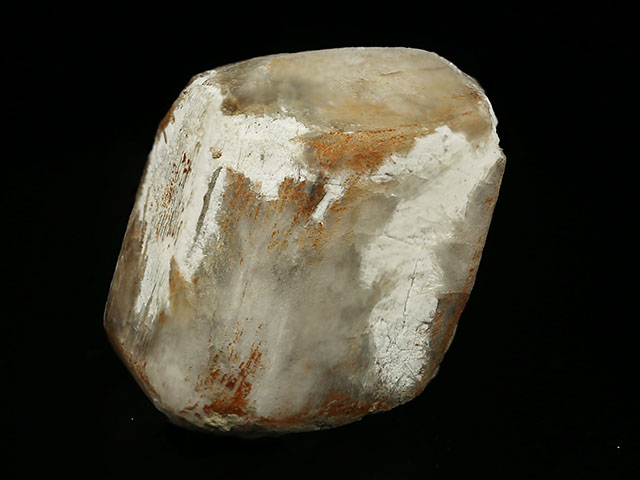Home > Pseudomorphs – March 3 > MS1518 Ulexite after Tincalconite after Borax
Ulexite after Tincalconite after Borax - Sold
- Kramer deposit
- Boron
- Kern County
- California
- U.S.A.
- 2.6 by 2.3 by 2.0 – Thumbnail specimen (fits into a 2.5 cm cube)
Ulexite is a complex sodium calcium borate mineral (Ghose et al., 1978). In his 1850 System of Mineralogy, professor James Dana named the species after German chemist George Ludwig Ulex (1811-1883), who obtained the first reliable analysis of the mineral.
This is an example of a double pseudomorph, in which an original crystal of borax first dehydrated to tincalconite, and them partially changed to ulexite. Both steps qualify as alteration pseudomorph processes, the first is simply dehydration, while the second exchanges calcium for sodium along with further dehydration. This example contains relict tincalconite, which is starkly white compared the pale gray ulexite. These form in greenish gray clay at the Kramer deposit, and are thus preserved as complete single crystals. There is a bit of iron staining on this example.


